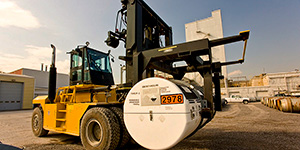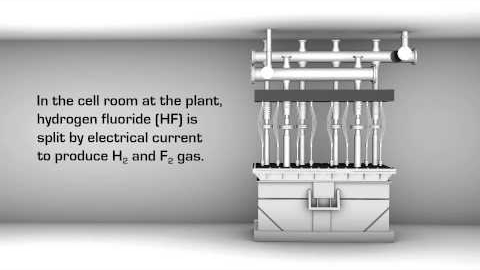Refining
Cameco's Blind River refinery receives drums of uranium concentrates, or yellowcake as it’s commonly known, from mines around the world.
Here, the uranium is separated from impurities using a series of chemical processes including digestion, solvent extraction, denitration and other processes. These refinement methods produce high-purity uranium trioxide (UO3).
UO3 is the feedstock for the next phases of the fuel manufacturing process and is transported to the conversion facility in stainless steel tote bins designed specifically to transport this material. The totes hold 9.5 tonnes of powdered UO3.
Conversion
Commercial nuclear reactors typically use one of two types of fuels. CANDU heavy water reactors are capable of using natural uranium (containing about 0.7% of the fissile isotope U235) in the form of UO2 fuel pellets. Light water reactors, on the other hand, require enriched UO2 with higher concentrations (between 3% - 5%) of U235.
The uranium conversion process for heavy water reactors changes UO3 to UO2. Nitric acid and ammonia are added to UO3, which is then fed into a special kiln operating with a reduction atmosphere. The resulting ceramic-grade UO2 powder can be formed into pellets for insertion in fuel bundles.

For light water reactors that require higher concentrations of U235, the next step is conversion to uranium hexafluoride (UF6), a chemical form suitable for enrichment. During this conversion process, the UO3 is combined with fluorine compounds to create UF6. UF6 is the only uranium compound that can exist as a gas, a liquid or a solid, depending on pressure and temperature. It is this characteristic that allows it to be enriched in the next stage of the process.
Steel transport cylinders, manufactured to exacting international standards, are filled with liquid UF6 at the conversion facility. The UF6 then solidifies within the cylinders. At normal atmospheric pressure and temperatures below 134°F (57°C) the UF6 remains in solid form for shipment to enrichment plants.
Commercial uranium conversion plants operate in the U.S.A., Canada, France, U.K., Russia and China. Cameco’s refining and conversion facilities are the only plants in Canada.








